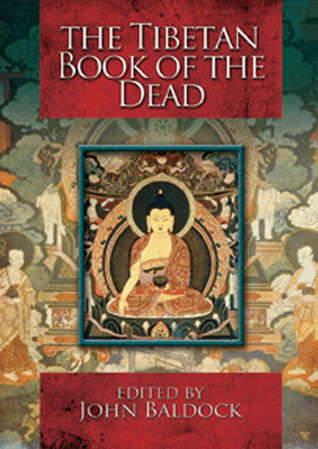
The Tibetan Book of the Dead
Check my rate
| Main centres: | 1-3 business days |
| Regional areas: | 3-4 business days |
| Remote areas: | 3-5 business days |

| Main centres: | 1-3 business days |
| Regional areas: | 3-4 business days |
| Remote areas: | 3-5 business days |
Published by Chartwell Books,, 2009, hardcover, 126 pages, condition: new.
IIn many ways this book is both a guide for living as well as a how to consciously move on after death. The book has been extremely popular in Central Asia among Buddhists. The Tibetan Book of the Dead contains especially written guidance and practices related to transforming our experience of daily life, on how to address the process of dying in the after-death states, and on how to help those who are dying. Some of these teachings include: methods for investigating and cultivating our experience of the ultimate nature of mind in our daily practice, guidance on the recognition of the science of impending death and a detailed description of the mental and physical processes of dying, rituals for the avoidance of premature death, the now famous great liberation by hearing that is read to the dying and the dead, special prayers are read at the time of death, and allegorical masque play that lightheartedly dramatizes the journey through the intermediate state, and a translation of the sacred mantras that are attached to the body after death and are said to bring liberation by wearing.
The editor, John Baldock, studied art history at the \u00c9cole du Louvre, Paris. His encounter with sacred art led to an exploration of the world's major religious and spiritual traditions. After a period of teaching art and art history in schools in England, during which he continued his spiritual studies, he left teaching to pursue a career as a writer. His books include The Essence of Sufism, The Essence of Rumi and an anthology of Zen wisdom.
Karma Lingpa was a 14th Century Tibetan Buddhist master best known as the tertön ("treasure revealer") who discovered the Bardo Tödröl (Eng: "Liberation Through Hearing in the Intermediate State" Tib: ), said to have been written and hidden by the great Indian adept Padmasambhava, who brought Buddhism to Tibet in the 8th Century.
The how-to guide for transiting from this life to the next. In Tibet, the bridge in between is termed "bardo". Very useful for folks like me seeking precision in bardo-crossing :)
Interestingly, the scores of steps on this pathway take upto 5 days. The book was thus compiled so that a family member/priest could direct the spirit through the bardo's confusion. Pure, compassionate, and fearless thoughts are the key to successful transit. Surprisingly, many Hindu deities are mentioned, though Buddhism is nontheistic and Tibet's language has no Sanskrit base. Circa 28 goddesses represent various emotions one experiences on the bardo. I hope future scientific research sheds light on this ancient map.